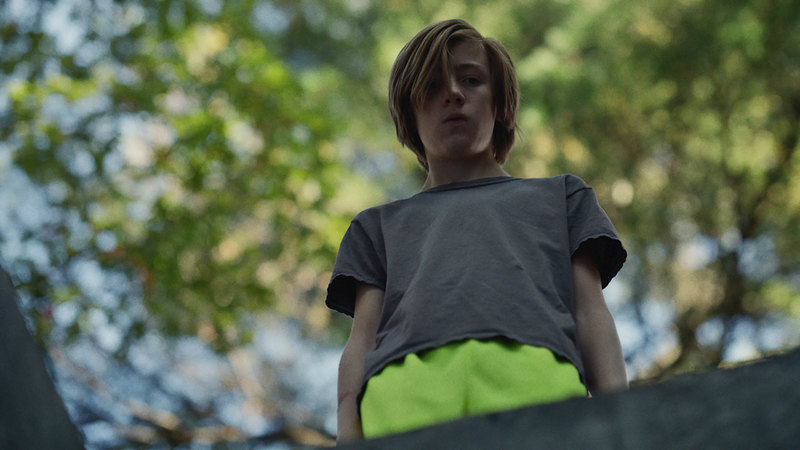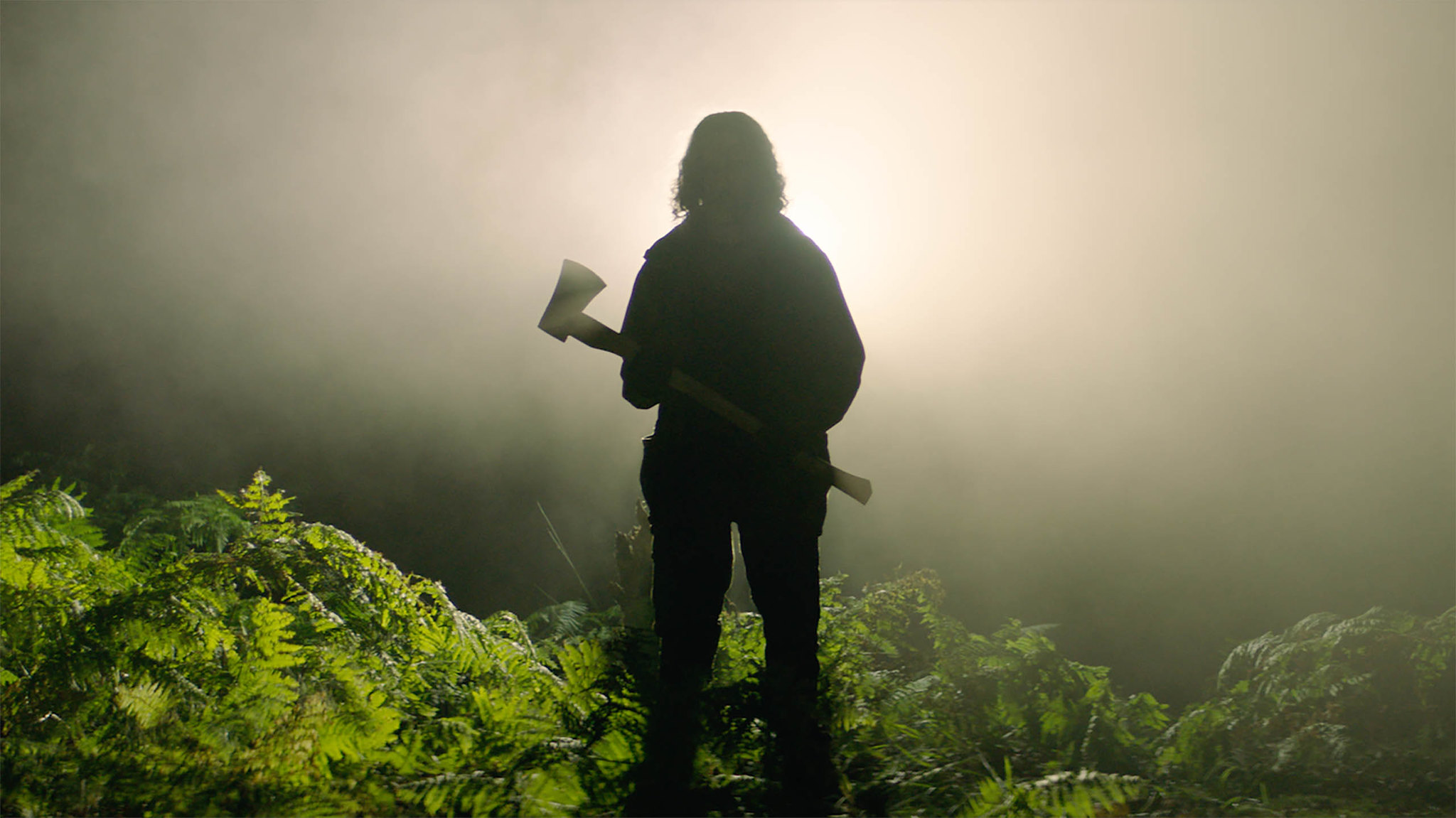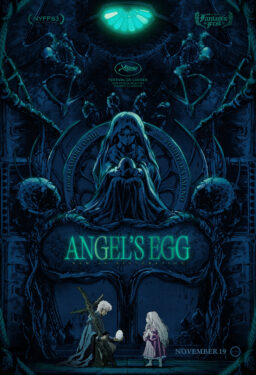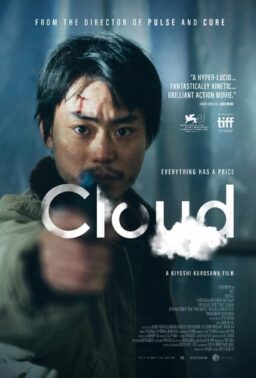We are going to see a lot of movies about the pandemic. Major world events always influence art, and we can expect issues related to COVID to work their way into every genre. One of the first pieces of filmmaking clearly inspired by what went down in 2020 was written last March and produced last Summer in Ben Wheatley’s return to form, “In the Earth.” A horror movie about isolation, paranoia, and dread, it’s a work that cribs from Tarkovsky and Wheatley’s own film history with echoes of the work he made before he started working with MCU stars like “Kill List” and “A Field in England.” It’s a sensory experience, designed to unravel and unsettle viewers with a visual and sonic assault. It may not all come together in the end, but it’s certainly going to be one of the most unforgettable experiences of 2021. (Neon has already picked it up for release.)
A deadly virus has ravaged the world and sent a doctor named Martin Lowery (a great Joel Fry) to a remote forest in search of a doctor in a research hub there who may have some answers. The hub is only reachable on foot, and Martin begins the journey with a park scout named Alma (Ellora Torchia), but the two encounter a man who appears to be living well off the grid named Zach (Reece Shearsmith). The travelers soon discover that Zach’s dangerous, convinced he’s found a way to communicate with the forest and the earth and all the things the mundanity of human existence has shrouded. Things get much weirder from there. Think “Annihilation” with more aggressive design and outright gore.
Working with cinematographer Nick Gillespie and composer Clint Mansell, Wheatley has made a film that becomes more and more unsettling with each scene while also maintaining a playful sense of twisted humor. It feels almost like they’re trying to mirror the panic of the world and the impact of forced isolation as the film spirals into its more surreal and psychedelic episodes—warning to anyone who needs it that this may set a record for flashing strobe imagery. It’s an aggressive, unsettling experience that will leave viewers shaken and trying to unpack what it’s all about.
So what’s the answer to that? For me, “In the Earth” is about four people trying to put the world back together, to figure out what’s wrong and how to fix it, no matter what that takes, including new kinds of thinking and even sacrifice. It mixes science, religion, and the supernatural into a nightmare vision that recalls everything from “Annihilation” to “Event Horizon.” And Wheatley keenly understands that this kind of quest to figure out the impossible only gets better if it gets more and more confusing. I’m not sure yet what it all adds up to but the same could be said about where we are in January 2021. This isn’t just a pandemic movie, it’s a MID-pandemic movie. We all learned that the impact of isolation and an unknowable future can drive people insane and now Ben Wheatley has made a movie about that. It won’t be the last.

If Wheatley is cribbing from Tarkovsky, Christopher Makoto Yogi is heavily influenced by other masters in his feature “I Was a Simple Man,” an elegiac drama that echoes Apichatpong Weerasethakul and Yasujiro Ozu in its look at man’s final days on this Earth. Cinematographer Eunsoo Cho produces some lovely shots of the Hawaiian landscape and Yogi has some interesting things to say about the process of dying, but his film is too often languid when it’s reaching for profound. It’s a near-miss, a work that’s easy to admire in terms of its narrative ambition and compassionate craftsmanship, but that further proves how hard this kind of somber cinema can be to pull off well.
Masao (Steve Iwamoto) is a Japanese American living in Hawaii, where he’s relatively off the grid, removed from family on the mainland and with few resources. He receives a mortality diagnosis and Yogi’s film unfolds as a meditation on how ghosts can haunt us even before we die. Masao’s long-deceased wife (Constance Wu) comes to him as if to accompany him to the other side, and Yogi’s story jumps back to key events throughout the man’s life, but this is not your typical death melodrama. What will we think about when we die? What will we feel? Whose faces will haunt us last?
Yogi clearly sees death as a natural process, presenting the final days of Masao as a lyrical, spiritual communion of sorts with the entire history of his setting. The film weaves back and forth in time, presenting long shots of the world around Masao, almost as if he’s returning to his natural form. There’s a deep empathy in Yogi’s work that’s admirable, but there’s also too often a sense of self-importance that makes the film feel like it’s meandering instead of finding deeper meaning. It takes a fine calibration of tone to make a film like this register as more than an experiment in style. There’s poetry here, but there are also long sections that feel hollow.

Hollow is a word I would also use to describe Pascual Sisto’s frustrating “John and the Hole,” and it’s another film from the second day of Sundance 2021 that feels heavily inspired by acknowledged masters. In this case, the influences are clearly Yorgos Lanthimos and Michael Haneke, but Sisto’s work lacks the dark humor of the former and the bloody teeth of the latter. The result is an experiment in blank affect and fractured domesticity that drags itself to a disappointing ending, one that only confirms it never really had anything on its mind.
John (Charlie Shotwell) is a relatively average 13-year-old. He plays video games with a buddy online and is training for a tennis qualifier. The repetitive nature of his life is amplified by Sisto’s boxed-in aspect ratio and Shotwell’s dead affect. This kid feels trapped before he makes the decision that changes his life forever. That comes when he finds an unfinished bunker deep on his family’s property. He drugs his family, including parents played by Michael C. Hall & Jennifer Ehle and a sister played by Taissa Farmiga, and he dumps them in that cement hole in the ground. As they wait for him to return, he goes about normal life, driving a car and even having a friend over to visit. As his family is stuck in the present, unable to figure out what happened to get them here and with no knowledge of what happens next, John tries to become an adult.
An unusual coming-of-age drama, “John and the Hole” is a heavily stylized piece of work that too often feels like it doesn’t exist in the real world and yet doesn’t have much to say as allegory either. I’m fine with the logical jumps in a film like “John and the Hole” if they feel like they’re adding up to something or even producing some kind of audience response as in the Wheatley film, but Sisto’s movie is defiantly removed from emotion and recognizable human behavior. It’s a thought experiment, punctuated with even more bizarre scenes involving a mother and daughter unrelated to John’s family who may be telling the story of the hole and may be going through some similar parent/child detachment. Who knows. There are effective scenes—a tense pool encounter with John’s friend is wonderfully drawn out—but the film grows more frustrating with the sense that it has nowhere to go. Maybe that’s the point? Domesticity can be hollow and aimless? Tell me something new.












